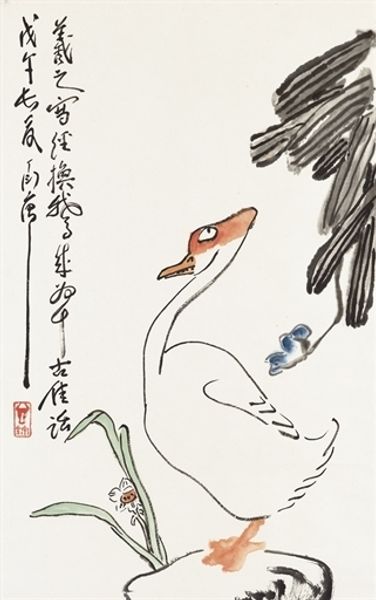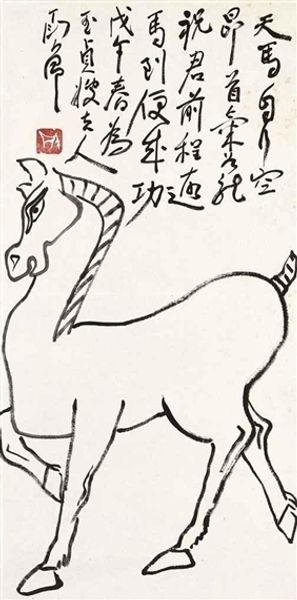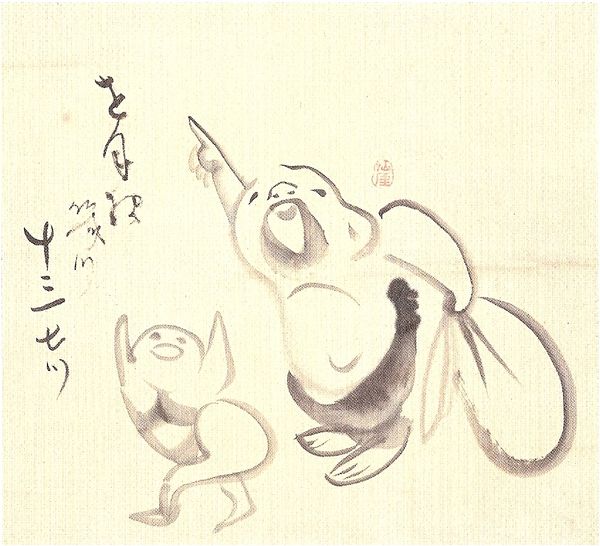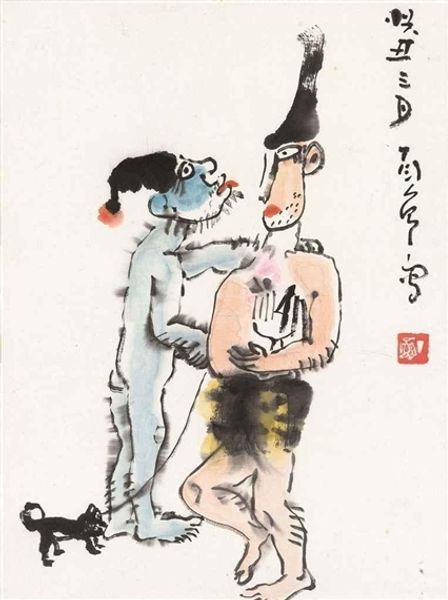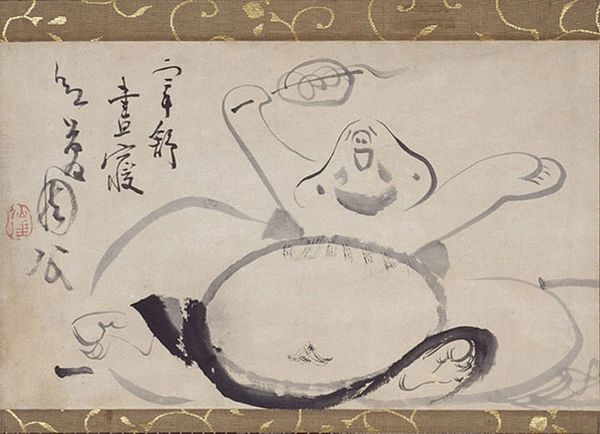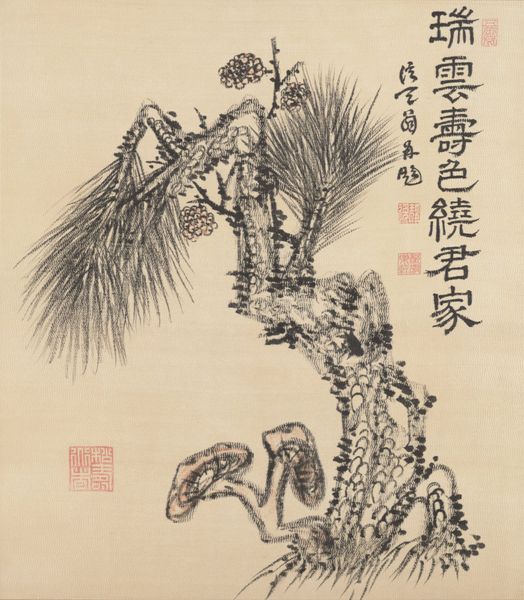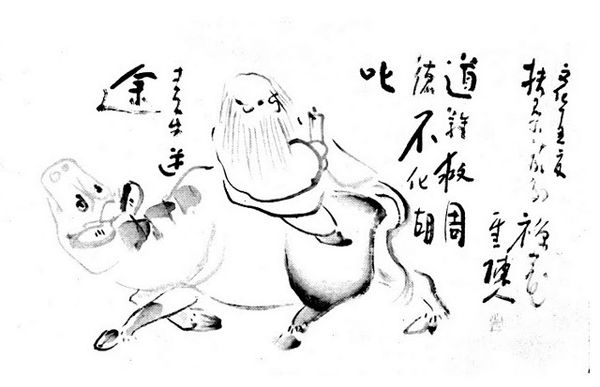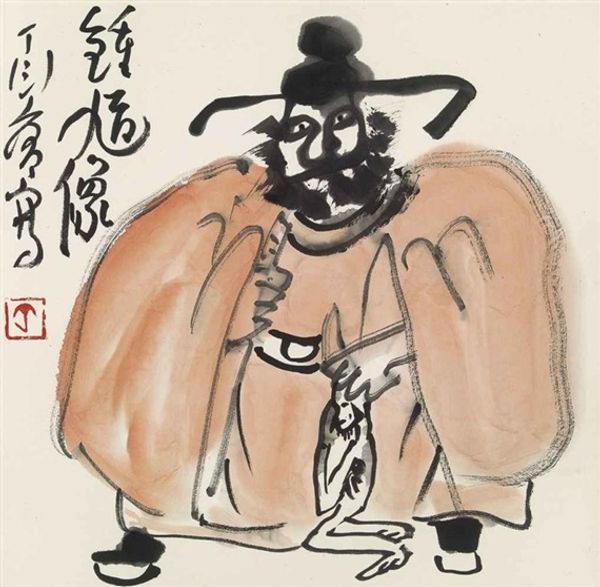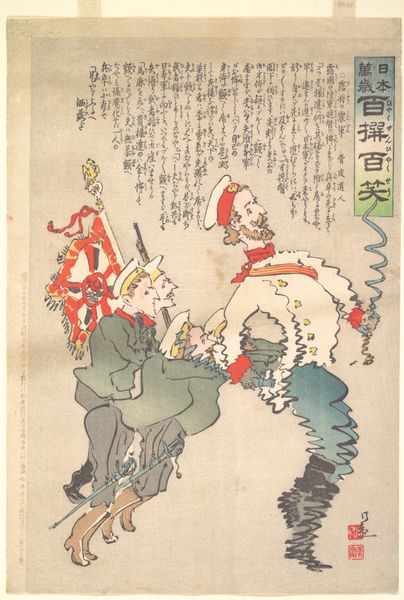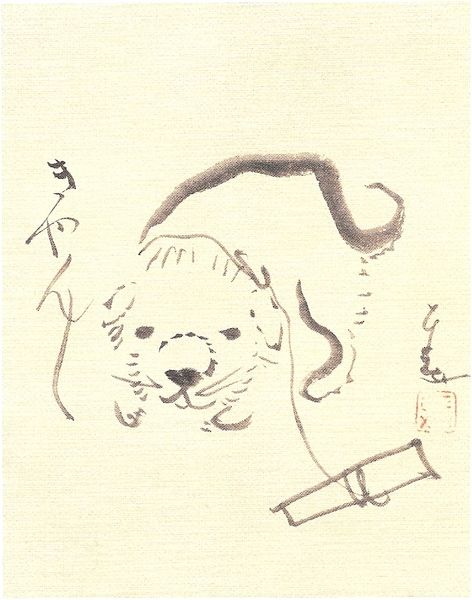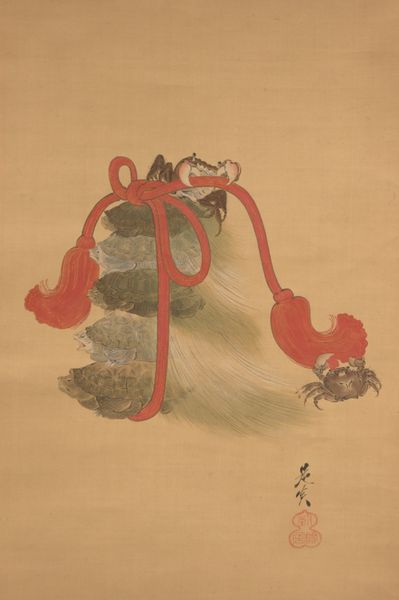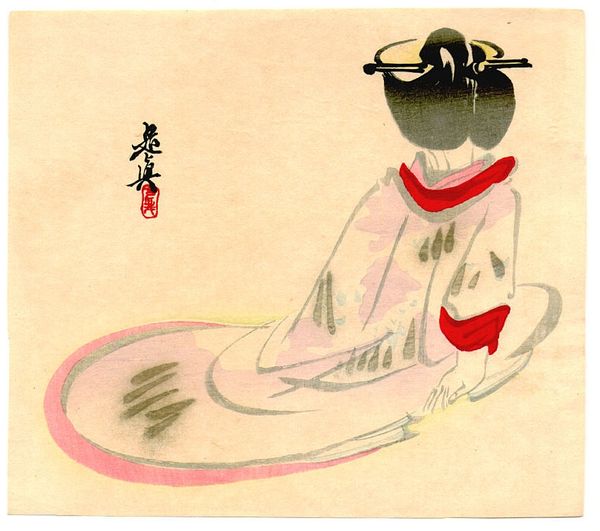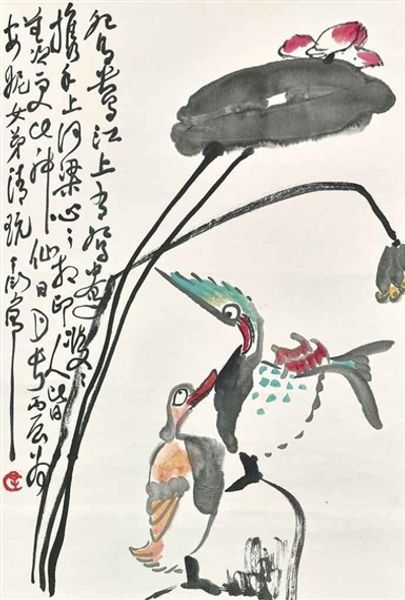
Copyright: Ding Yanyong,Fair Use
Curator: Ding Yanyong's 1978 drawing, "Lion Dance," crafted with ink on paper, presents us with an intriguing piece. What strikes you first about it? Editor: It has this almost naive, child-like quality in its execution. The lines are simple, bordering on crude, but there's also something undeniably joyful about it. A sense of playfulness perhaps. Curator: Precisely! Note the deliberate economy of line, almost calligraphic. Yanyong’s style often integrated traditional Chinese ink painting techniques with a more modern, expressive approach. The flat planes of color and bold outlines contribute to a simplified visual language. Editor: Yet it feels deliberately distanced from the actual cultural weight of the Lion Dance, doesn’t it? The performers seem burdened, almost caricatured, and the lion itself looks rather absurd with its bulging eyes. Could this be read as a commentary on the performance of tradition in a changing society? Curator: An interesting interpretation. Formally, the composition focuses on the contrast between the geometric shapes forming the lion and the more fluid, organic lines of the human figures. The limited palette also forces us to concentrate on these shapes and lines and, yes, even that comical face. Editor: The caricature lends itself to considering post-colonial identities. Was Yanyong maybe poking fun at how these traditions were becoming commodified or seen as outdated? Curator: It's definitely a valid point to explore those potential social narratives woven into the artwork. By reducing the figures and lion to their most essential forms, it pushes viewers to deconstruct and engage with the foundational symbols of the dance. It makes us reconsider their meaning. Editor: It makes you wonder what aspects of that shifting landscape the artist was interested in challenging. The work as an artifact really reflects its time and place, not just culturally but in broader terms. Curator: Exactly. Focusing on formal elements allows a space for interpreting those narratives while seeing the composition for its basic structural beauty. Editor: Agreed. “Lion Dance”, beyond its immediately arresting visual qualities, holds within it complexities that speak volumes to identity, history, and the often-challenging dynamics of culture.
Comments
No comments
Be the first to comment and join the conversation on the ultimate creative platform.
